“We Create the Country We Want to Live In” is the slogan of a very special Ukrainian informal school – one that offers a program for 13-15-year-olds to become Agents of Change. The slogan was conceived by the school’s first alumni in 2015 and encapsulates the heart of the program.
It has four phases and culminates in the implementation of a project within the student’s own local community. Over the last six years, some 300 projects have been carried out by 420 teens from all over Ukraine. The founder of the school has explained the secret of its success.
Students’ projects included everything from family festivals, open-air film screenings, marathons, and bike tours, to charity events, boarding games, online apps, murals, artworks, and sports stadiums. In spite of the challenges posed by COVID, the school did not stop operating – it simply adapted its program to an online format.
The results from the 2020 online year have proved to be just as successful as in previous years. The quarantine did not prevent these young people from launching their first independent project. In March 2021, the new ninth School round began with 125 out of record 920 applicants passing a rigid selection process.
This school about dreams started from a dream. After a civil education internship in the USA, Kateryna Kliuzko was inspired to create a space where kids can think about their dreams and make their first steps.
Since its inception, the school has been growing in scale. In 2018, it received a major grant from the United Nations Democracy Fund. Before that, the teens managed to implement their projects without money from the school whatsoever.
Projects

Each year, the school organizes a public presentation of their most outstanding projects at the American House in Kyiv.
Yaryna Mykytyshyn, a 13-year-old from the town of Sokal in the Lviv region, partnered with the Sokal City Council to expand the tourist programs of the hometown she loves.
“Sokal is one of the most beautiful and interesting towns in Galicia. I love my community very much and I’m very interested in its history. This is how my idea for this project emerged. I decided to present the story of Sokal by creating information tables about historic buildings. To modernize information and to be able to drill deeper, I added QR codes which direct the viewer to my website where they can learn more through articles and other things. This is my first project, but definitely not the last. I want to create and install a large tourist information site which would include a map of the city and tourist routes to points of interest. Another goal is to produce tourist booklets about Sokal. This work would be prepared with the help of a local history group at the creative center for children and young people,” says Yaryna.
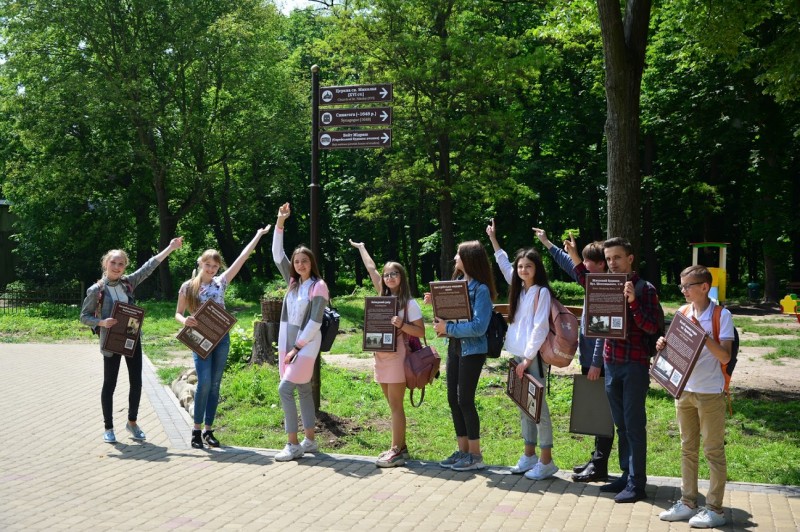
Yaryna was able to raise more than UAH 30,000 ($1,100) for her project. However, projects have come together with various budgets. For example, Matviy Shevchenko from Kyiv used his interest in chemistry to create a chemical board game with a budget of just UAH 625 ($25). Nearly 100 people tried out the game during its presentation.
“[The game] provided people with information that was not in the textbooks and aroused interest in chemistry,” Matviy says.
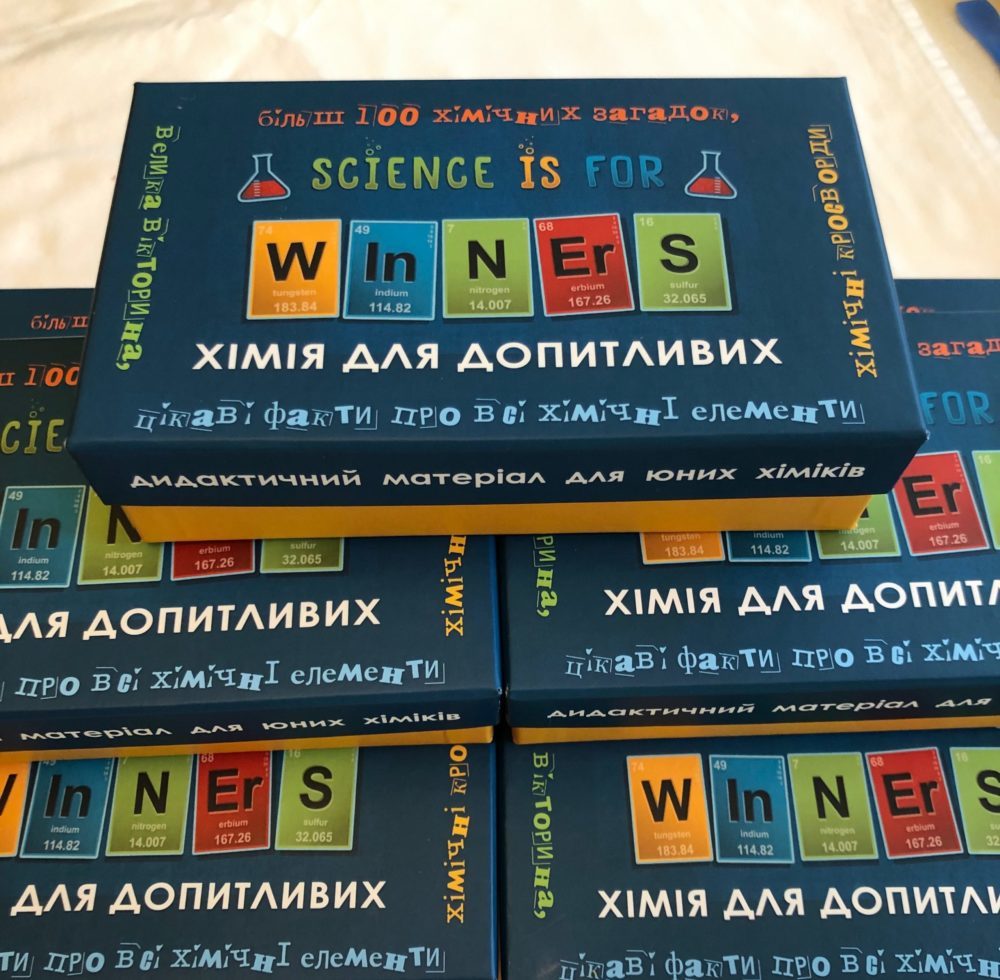
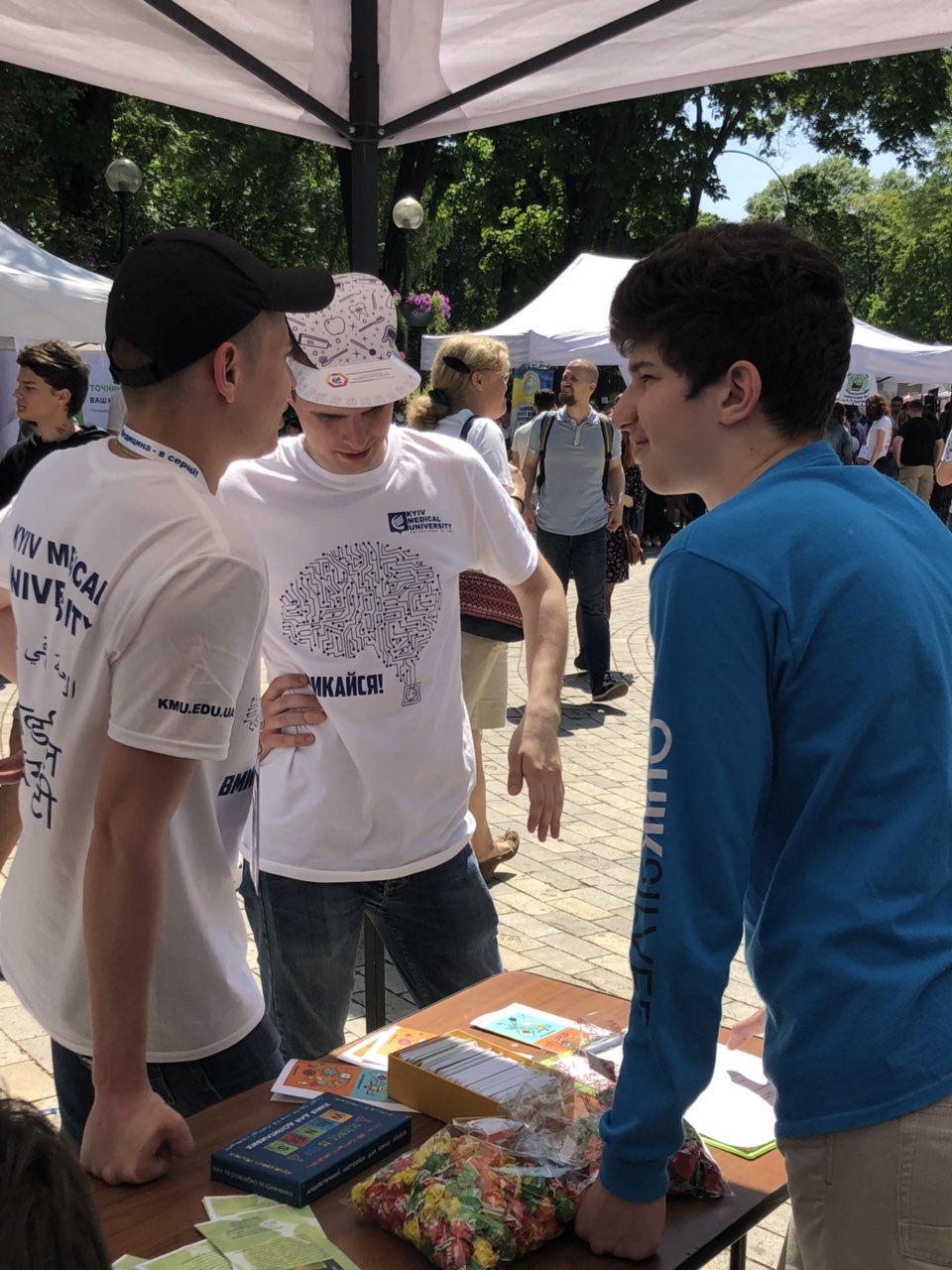
Fifteen-year-old Olena Kurnytska
living in Lviv organized a two-day family education and entertainment event -- Happy Families Festival (SHAFA) -- with a budget of just UAH 807 ($30). The festival took place in the city center and featured 12 play zones for kids.
Grownups were able to participate in forums held by specialists on a range of topics, such as emotional intelligence, living with the loss of a loved one, financial literacy, and other subjects not readily available to them. Olena persuaded 30 specialists to take part by volunteering. She managed to attract all these resources for free.
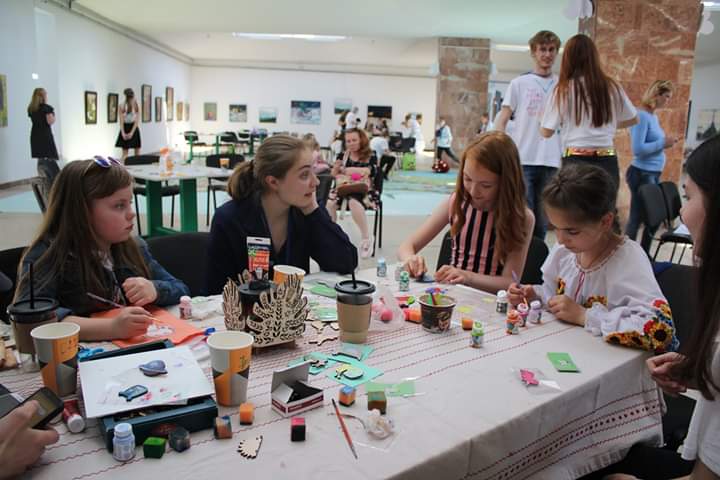
Olena says that she created an event by which she was able to also inform herself.
“I met changemakers and influential people of my city and learned from them of simplicity, kindness, and willingness to help. I also discovered the principle of learning by doing concrete projects, because there is a whole list of things I would not understand if I did not try them in practice.”
Tetiana Shapoval, 15, from the town of Yuzhoukrainsk in the Mykolaiv Oblast, has a keen interest in STEM (Science, Technology, Engineering and Mathematics) and was disappointed that opportunities from this promising industry are inaccessible to children from orphanages. This compelled her to create interactive lessons for them.
For example, she devised a fun way to show how exciting physics can be. Kids were able to create a spinning peg-top by applying simple technologies to different materials (papercraft, LEGO bricks, 3-D pen) which demonstrated basic physical laws. She ended up travelling to three different locations and conducting a total of 15 lessons for more than 100 children.
“The most important thing I learned was dealing with children who do not have parental care. During our classes, we became almost friends and it was very cool. I only realized how much I enjoyed it because the kids gave very enthusiastic and only positive feedback. I understood the value of what I have, and especially that I am ready to share it with others,” Tetiana says.

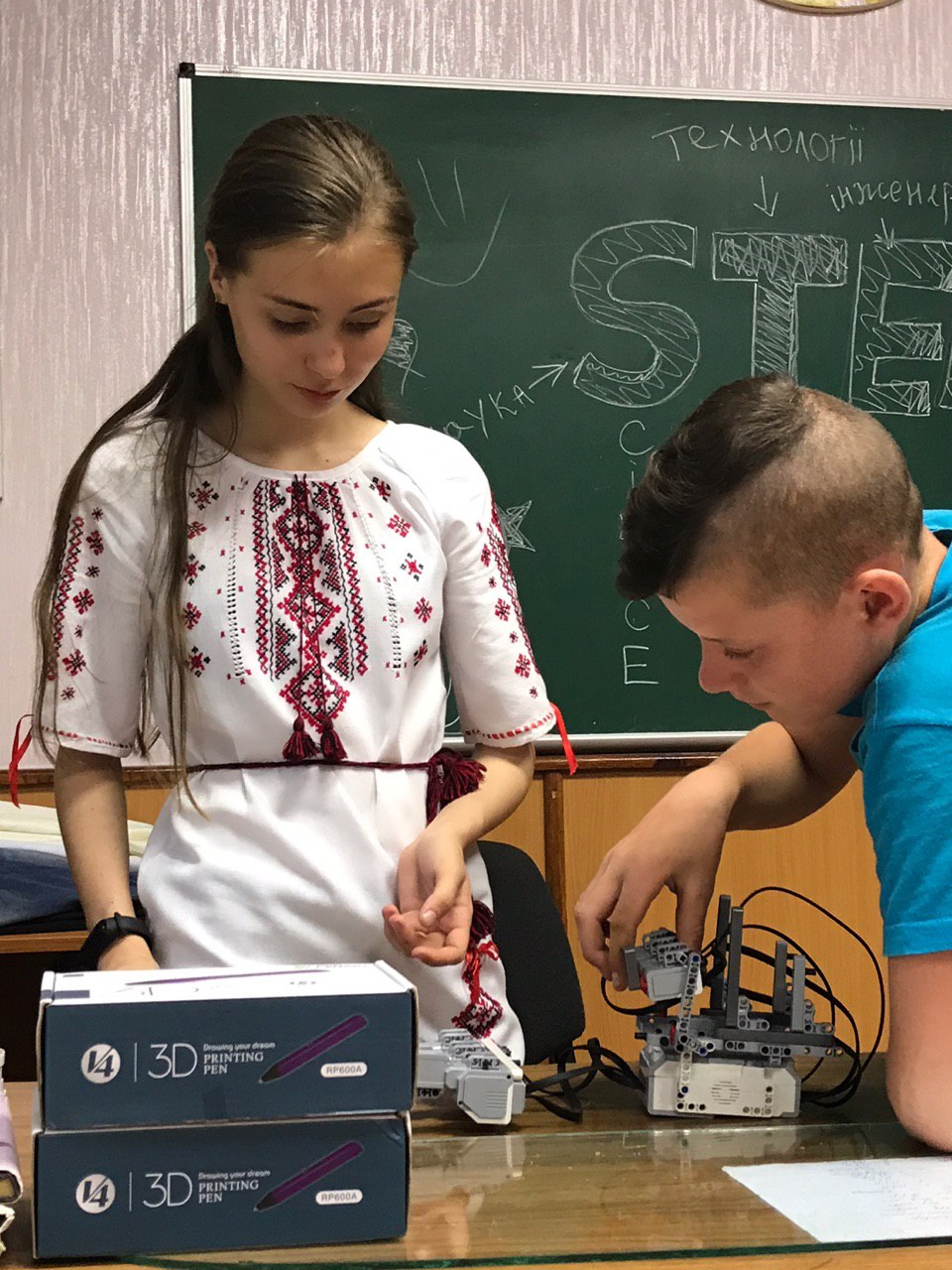
It is rare for friends to enter this program together since the candidates are so dispersed and the competition very tight. However, 16-year-old Bohdan Bessarab and Mariia Marchuk from Vinnytsia both passed the selection process.
Together they created a fashion brand which redesigns used clothing into unique fashion wear that both displays and promotes their artistic concepts. Special collection bins were installed throughout the city for the donation of clothes to their business. They decided to donate 10% of their profits to charity.

Larysa Matolinets, 15, is from the village of Koziova in the Carpathian Mountains. Her project focused on creative utility. She transformed an abandoned schoolroom into an upbeat work space for young people, and named it SVINB (Community of Free and Interested).
“SVINB is not just a room for me now. It’s a pleasure to work with people who have collaborated to achieve this goal. I appreciate this place because it has become my small mark in school history and self-government,” Larysa says.


Anastasiia Yaroshyk, 14, from a village in the Rivne Oblast, had a goal “to make Varash more cheerful.” She created the village mascot -- Varashyk the Lamb -- and drew his picture on the facades of community buildings – gymnasium, music school, resource center, and the public library.


Read more about the projects here.
The secret of the change agent school


The secret of the change agent school is that it is not solely about project management: “Forget about the project you have in your mind,” is one of the first phrases students hear as they embark upon the first phase of the program.
Self-understanding is the crucial starting point in the Agents of Change journey. The founder of the school Kateryna Kliuzko is a psychologist and has done extensive research on the subject of adolescence. She is a master of art therapy -- a process that helps young people search for their real dreams by finding their own internal resources. From there, they move on to lectures and group work on project management and leadership.
In her lecture on leadership, Olha Budnyk, director of the reputable Center of Political Studies and Analytics Eydos in Kyiv, points out that leadership is not necessarily public leadership. Everyone can practice personal leadership by being proactive in your own life as well as in your own surroundings like your family.
According to another instructor, the approach to project management is special too -- different for adults and teens. Serhiy Kornyliuk
is the senior analyst of municipal strategies for the large consulting firm CIVITTA. With adults, he focuses on problem solving; with teenagers, his approach is much more creative.

“In the first place, the project has to inspire its creator, then it will inspire others,” he says.
The second phase of learning is called From Dream to Action – although intense, it is key. Students are required to do a three-minute presentation about what they plan to do, then answer questions from peers and receive critique from instructors. This helps them to hone their plan and better prepare. Some will end up changing their ideas dramatically. During this phase, students are also exposed to leading practitioners from different sectors of society (public, private, and civic).

Once the first two phases are completed, students spend three months implementing their projects. Teams are not assembled by trainers, as is the case in many other schools with project management components. Each participant needs to organize a team in their own community. Some students decide to do their project on their own.
Regardless, throughout the implementation process, they will receive mentoring from their trainer as well as from members of alumni. The school maintains a large community of alumni who are an indispensable resource for imparting knowledge gained through their own experience.
From local project to public influence
The third phase is the celebration of results and is called From Local to Global. Only those who have implemented their project to an acceptable level get to this point. Apart from sharing the success of their projects, students focus on synthesizing all they have learned and come to realize how readily small steps can be scaled up. They meet and interact with prominent persons who also started from small steps.

After this third phase, the Agent of Change journey is not quite over. For those interested in the public sector, a fourth phase called How My City Works is available.
Currently, more than 100 participants are working on their project concept for the 2021 session. Presentations will begin in June. The successful candidates will start their projects over the summer months fanning out to villages, towns and cities all over Ukraine. The chain of change continues.
This publication is part of the Ukraine Explained series, which is aimed at telling the truth about Ukraine’s successes to the world. It is produced with the support of the National Democratic Institute in cooperation with the Ukrainian Crisis Media Center, Internews, StopFake, and Texty.org.ua. Content is produced independently of the NDI and may or may not reflect the position of the Institute. Learn more about the project here.





